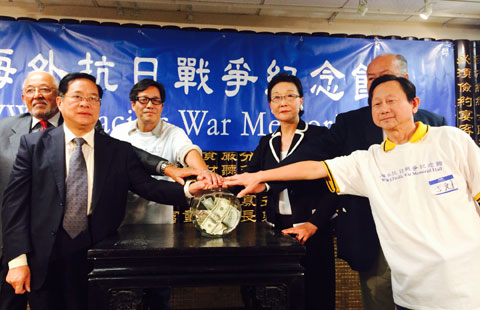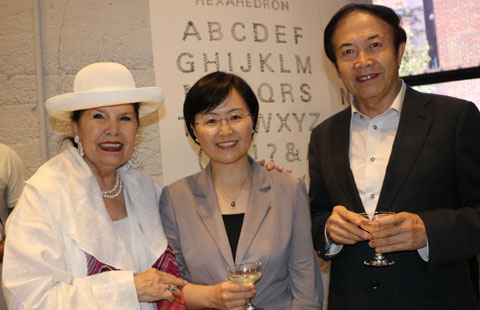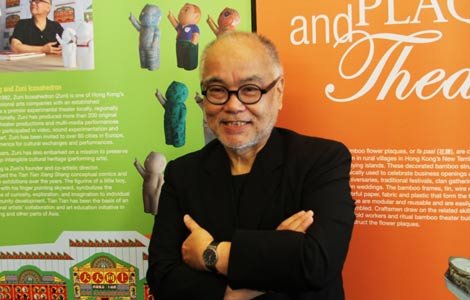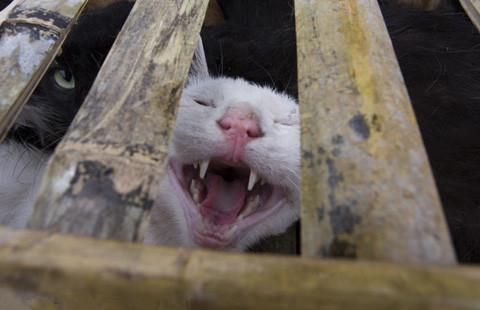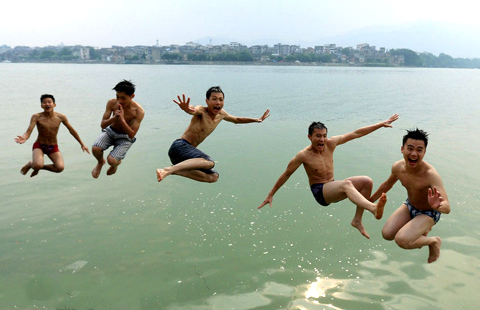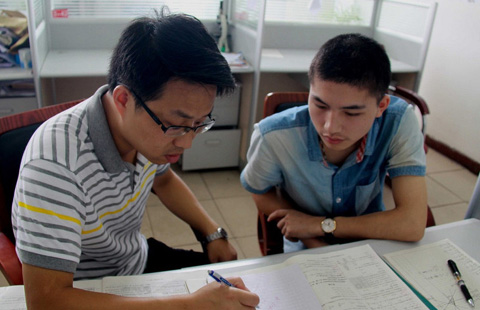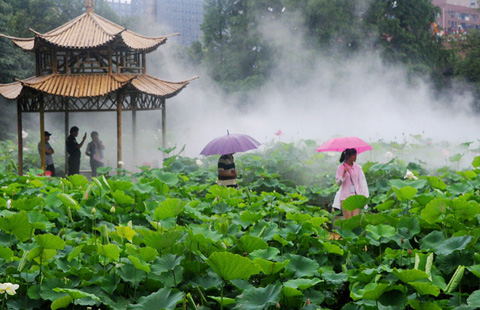Spirited away
Updated: 2014-07-08 07:14
By Rebecca Lo (China Daily USA)
|
||||||||
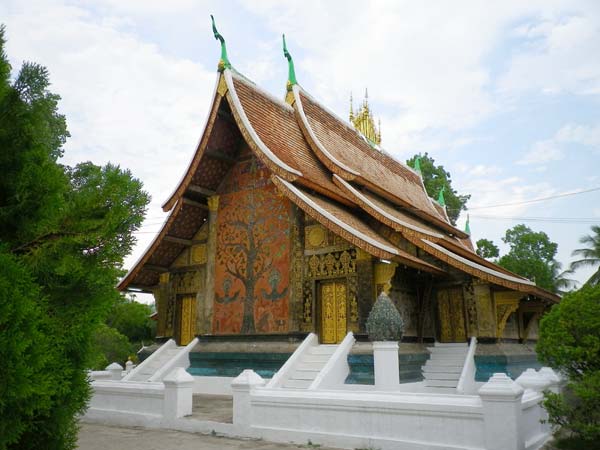 Built in 1560, Vat Xieng Thong contains some 20 structures where successive kings were once crowned. Photo by Rebecca Lo / For China Daily |
My mother taught in a Buddhist school in the New Territories of Hong Kong and my father is a devout follower of Buddhism, often going away on retreats or inviting Buddhist nuns and monks to drop by for tea and philosophical conversations.
The life of an "outside-the-family" person, as we called these folks who have renounced blood ties to seek a higher purpose, was supposed to be one of frugal meekness. Yet more and more, I notice that they sport designer-brand watches and frequent Michelin-starred restaurants.
It was all the more refreshing, then, to engage in some back-to-basics Buddhism during a trip to Luang Prabang.
The former capital of ancient Laos is known for preserving an unbroken way of life for centuries. And that includes worshipping in more Buddhist temples - known as vats - per square kilometer than any other place on the planet.
Kevin O'Hagan, the former general manager at Hotel de la Paix, where we were staying, graciously set up a unique Luang Prabang activity for us. For centuries at daybreak, the town's hundreds of monks proceed along central Sakkaline Road as residents bestow alms to the supplicants.
|
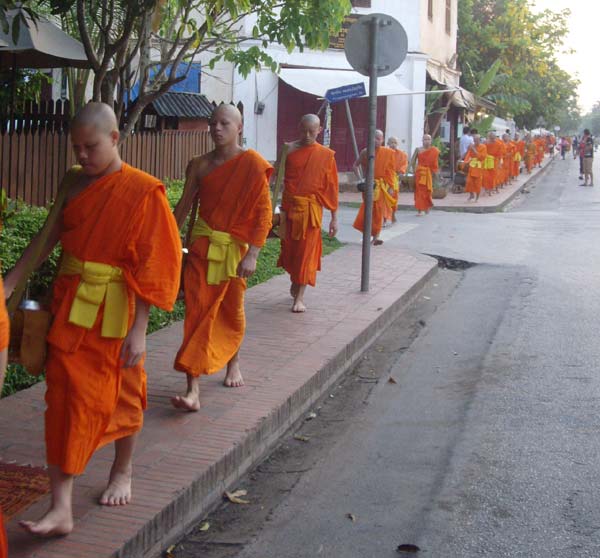 The alms-giving ceremony at daybreak is a tradition in Luang Prabang. Photo by Rebecca Lo / For China Daily |
Soon, a parade of orange-robe clad monks began to stream down the street, pausing just long enough for us to drop a handful of rice into their pouches. Many were barefoot young men, who then retreated back into one of the temples to spend the rest of the day in prayer and contemplation.
Afterward, our driver Uncle Fong took us to a street adjacent to the National Museum that serves as the town's morning produce market. We saw fat quails in wicker baskets, chilies and eggplants, meat roasting on charcoal spits and even a Komodo dragon that would make an interesting pet for some brave collector.
As we were starting to fade after the early-morning start, we stopped by Joma Bakery and Cafe for a break. The two-story hangout is popular with backpackers, who tend to park for hours in one of the upstairs rooms armed with iPads and coffee.
Despite the lure of numerous baked pastries, we decided to save our appetites for dinner and went with such snacks as a taco salad and mango crumble, with minty lemon squash to cool us down.
We then detoured out to the Lao Textiles Natural Dyes workshop and showroom in Xang Khong village. Weavers were working on an assortment of fabrics to be made into shawls, skirts, rugs and wall hangings, with patterns ranging from traditional to contemporary.
|
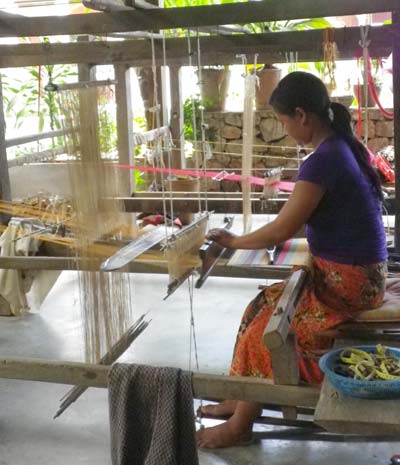 A woman works on looms at Lao Textiles Natural Dyes. Photo by Rebecca Lo / For China Daily |
Heading back into the center of town, we noticed vendors were beginning to unfurl blankets and unpack wares on top of them for the daily night market. A mind-boggling array of garments, antiques, trinkets and snacks were available for sale. I chose a table lamp with a floral paper shade that would make a striking nightlight. The lamp's four sides collapse, making it relatively easy to take home.
Laotian coffee, with its French-roast richness and pure mountain-air breeding, is a good souvenir. There are plenty of vendors selling whole-bean or ground versions at the night market, along with Laotian teas.
The tea's fragrance was eclipsed by the aroma of river fish sizzling on charcoal wafting from a side alley. Along the way, we saw papaya salad being made to order along with coconut sweets deftly nestled into green leaves. But the call of the fish was too strong, and we soon had one to tuck into a serving place, armed with plastic gloves so that we could enjoy it with minimal messiness.
Smoky and sweet, its plump flesh was washed down with delicious cold local beer accompanied by wok-fried greens and crunchy chicken wings on the side. We shared a table with an Indian IT executive on holiday, who then proceeded to initiate a friendly chat. Glancing around, I noticed that similar bonding rituals were occurring, as strangers sharing tables became friends over the many local delicacies to sample.
The palace itself is an elegant combination of traditional Laotian and French Beaux Arts architectural styles. Beautifully manicured grounds fragranced with frangipani trees lead to the palace entrance next to the mighty Mekong River.
Further out along the peninsula is the town's resplendent group of temples, known collectively as Vat Xieng Thong. Built in 1560 by Laotian King Setthathirath, there are some 20 structures on the grounds where successive kings were formerly crowned. The site's architecture represents excellent examples of Laotian craftsmanship, as many buildings tell stories embellished with colored mosaics and decorative gold flourishes.
We ended the day with a Laotian meal at 3 Nagas' outdoor terrace. Steamed fish, deboned and stuffed with mushrooms, stuffed sausage, red sticky rice and a rich soup were all culinary standouts.
As we savored the dishes, I once again marveled at how the simplicity of the Laotian spirit could bring so much enjoyment.
IF YOU GO
To get there
Vietnam Airlines operates daily flights from Beijing to Luang Prabang International Airport via Hanoi.
Hotel de la Paix
Thai designer Durangrit Bunnag worked his magic to transform a century-old county prison into a tranquil 23-suite retreat complete with private swimming pools, a restaurant, a spa and a cooking school. It's walking distance from the city center yet far enough away to feel like a sanctuary.
hoteldelapaixlp.com
3 Nagas
Ideally situated in the middle of Luang Prabang's main artery, 3 Nagas consists of two houses dating back to 1898. The 15 guest rooms and suites include charming period architectural details and polished hardwood floors, while its two restaurants offer traditional Laotian and French fare.
3-nagas.com
Amantaka
A former hospital just off the main streets, Amantaka contains 24 suites in French colonial luxury that look into a central courtyard. Deep verandas provide welcome shade and facilities include an outdoor swimming pool, Aman spa and a fitness center, library, restaurant and gift shop.
www.amanresorts.com
(China Daily USA 07/08/2014 page10)
Most Viewed
Editor's Picks

|

|

|

|

|
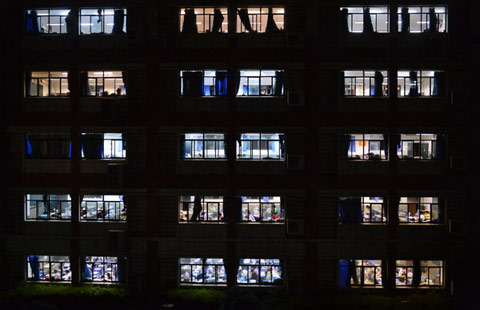
|
Today's Top News
Chinese envoy: 'Time is ripe' for BRICS' bank
China, US to discuss monetary policy
`God father’ of HK art honored for Smithsonian exhibit
IBM to try to curb Beijing's pollution
Double agent 'contradicts' trust with US
China urges US to stop abusing remedy measures
Guo Degang to buy US network?
WWII memorial announced for Bay Area
US Weekly

|

|
